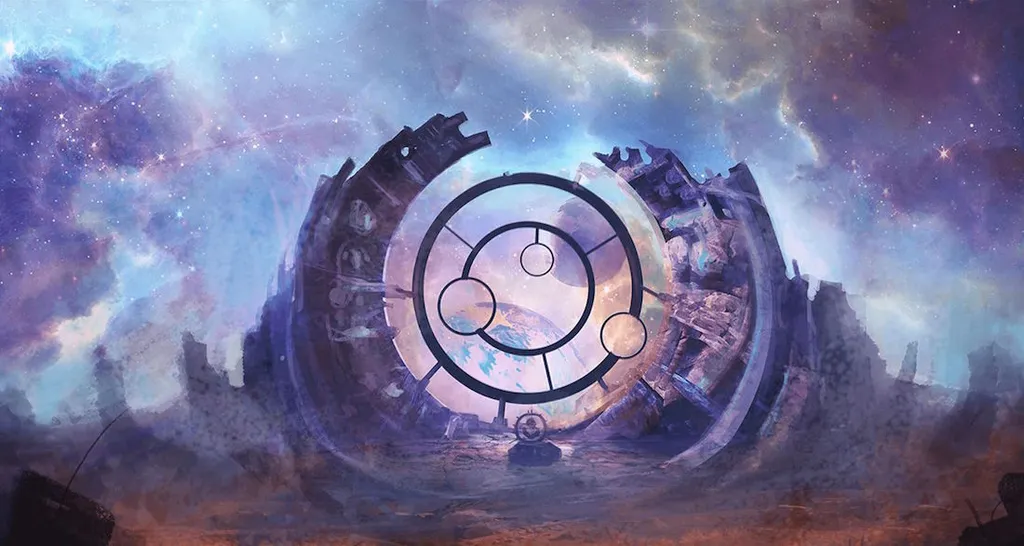“Begin at the beginning,” the King said, very gravely, “and go on till you come to the end: then stop.”
The above is a quote from the literary classic Alice in Wonderland. It is one of the most famous conversations from one of the world’s most famous books. It is also an apt way to begin a review of Alice VR, a virtual reality video game heavily inspired by Lewis Carrol’s seminal masterpiece. Because, unfortunately, while this game does take a respectable swing towards greatness, the final experience is little more than a beginning and an ending, with not very much in between.
For the beginning, let’s start with the good. Alice VR is the first fully-fledged games from developer Carbon Studio. For a debut attempt, there is quite a bit to be impressed with here. Chief among these points of respectability is the game’s atmosphere.
The story of Alice VR follows you as the recently reawakened crew member of The Red Queen, a massive interstellar vessel. You’ve been removed from suspended animation to address a very serious problem: the ship is out of gas. Your mission, should you choose to accept it, is to warp down to the mysterious planet you find yourself orbiting and retrieve more fuel. It’s a simple enough premise but what really sells it are the game’s visuals.
Alice VR was built in Unreal Engine 4 and its use of lighting, shading, and effects are therefore what we’ve come to expect from this top-of-the-line developer tool. When watching the trailers or seeing the screenshots for Alice VR, the unique colors and striking graphical fidelity are all apparent and seem very well designed. However, the trouble comes when this artfully done 2D concoction has to make the jump into the 3D immersive landscape of VR.
If Alice VR had remained a 2D game then it would be a very pretty production. However, in VR, where resolution is limited and careful art design is more important than flashy graphics, the polished visuals lose much of their luster. The dark hallways and mine shafts of Alice VR may be atmospheric and pretty on a monitor, but inside a VR headset they just look fuzzy and slightly out of focus. Carbon Studio has built a beautiful game here, but unfortunately not a beautiful VR game.
VR game designers need to employ several unique tricks and techniques in order to create experiences that work well under the pressure of immersive technology. The freshman designers at Carbon Studio seemingly missed these memos and instead created a game that combats, rather than compliments, its medium. This is apparent in the way the game looks inside of VR, but also in the way it plays.
In keeping with the Alice in Wonderland aesthetic, Carbon built several marquee mechanics into their game that reflect the world of the book. There are shrinking and growing segments as well as zero gravity, topsy-turvy sections that task you with rotating a room around you in order to solve various puzzles. Alice VR also uses a free-roaming control scheme that allows you to glide through the world using only the joystick, rather than opting for a teleportation or blink locomotion system. These mechanics would be relatively interesting in 2D, but in VR they became a problem.
VR games are always one step away from being nauseating and so if a game in this world is going to attempt reality distorting, world spinning mechanics such as these, then they need to do so in a very careful way in order to reduce the possibility of motion sickness. Unfortunately for Alice VR, Carbon Studio did little to mitigate the nauseating effects of shrinking, growing, or spinning around a room throughout its game.
All of this, combined with the free-gliding locomotion adds up to a game that is difficult to play for longer than half an hour without having to take a break and resettle your faculties.
It should be noted that different people react to motion sickness in VR differently and it may be possible for some to enjoy the game free of nausea. The poorly executed mechanics would also be less destructive if the game that they allowed you to play was interesting and challenging. But this isn’t really the case as a whole.
Alice VR is a game built around puzzles but most of them seem random in their placement and design and a bit unsatisfying to solve. There were at least one or two walking puzzles that I completed without even realizing I was doing so. The challenges I was aware of felt contrived in their difficulty and elements.
For an example, early on in the game there is a puzzle that asks you to guide a robot from point A to point B on a grid-like floor. You move him one square at a time, but if you move to the wrong square it will flash red and your robot will be moved back to start. Puzzles in games should feel challenging but fair, but this just seemed like a “guess and check” cop out to apply the illusion of a challenge over something that didn’t even seem like it should be a puzzle in the first place.
I had high hopes for Alice VR. It sincerely attempted to create a unique world filled with mystery and charm. But unfortunately, there are too many design flaws to let that world shine through.
Finals Score: 4/10 – Forgettable
The importance of making a good VR game, not just a good game, is demonstrated well in Alice VR. Hopefully, Carbon Studio can continue to take big swings on interesting intellectual properties in the future. With a little more experience they could someday hit one out of the park.
Curious about this score? Check out our review guidelines for more information.





























